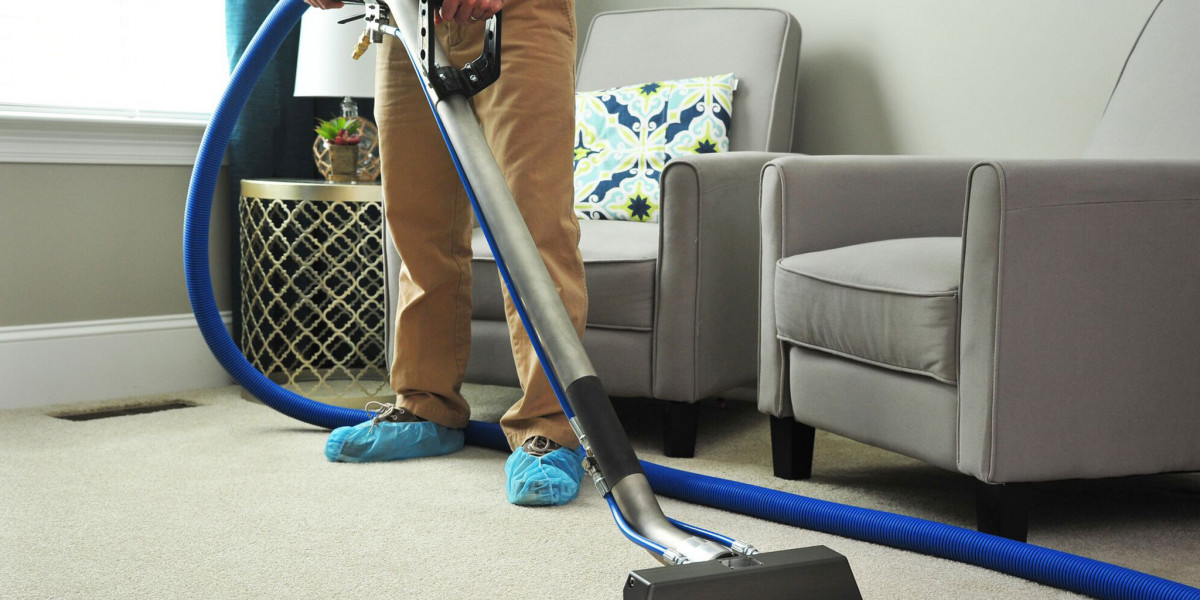Energy efficiency is more than just a trendy buzzword; it's a necessity in today's world. With rising energy costs and increasing environmental concerns, finding smarter ways to manage energy consumption has never been more crucial. Enter the Heat Recovery Exchanger—an innovative solution that not only enhances indoor comfort but also saves money on utility bills. Imagine being able to breathe fresh air while simultaneously reducing your carbon footprint. Sounds too good to be true? It’s all possible with smart ventilation solutions like heat-recovery exchangers.
What Is a Heat-Recovery Exchanger and How Does It Work?
A heat-recovery exchanger is a device designed to improve energy efficiency by transferring heat between two air streams without mixing them. In simpler terms, it captures waste heat from outgoing air and uses it to warm incoming fresh air. This process relies on the principle of thermodynamics, where warmer air naturally transfers its energy to cooler surfaces. As stale indoor air exits a building, it passes through one side of the exchanger while fresh outdoor air enters from the opposite side.
The components include a core made of materials that facilitate efficient heat transfer. Fans help move both streams of air through this core seamlessly. By optimizing this exchange, buildings can maintain comfortable temperatures while reducing reliance on heating systems. This not only lowers energy bills but also promotes sustainable living practices in modern architecture.
Heat-Recovery Exchangers Vs. Traditional Ventilation Methods
Heat-recovery exchangers are designed to optimize energy efficiency in ventilation systems. Unlike traditional methods that expel stale air without considering its temperature, heat-recovery systems reclaim warmth from outgoing air. This process significantly reduces the need for additional heating or cooling. The result? A more balanced indoor environment with lower energy consumption.
Traditional ventilation often leads to wasted energy. By continually cycling fresh outdoor air, it can leave homes and buildings chilly in winter and sweltering during summer months. In contrast, heat-recovery technology retains valuable thermal energy. It allows dwellings to maintain a comfortable atmosphere while minimizing utility bills. Moreover, these advanced systems enhance overall indoor air quality by filtering incoming air through built-in mechanisms. This makes them not only efficient but also beneficial for health-conscious consumers who prioritize clean living spaces.
Energy Savings with Air Recovery Ventilation System
The air recovery ventilation system is a game-changer for energy savings. By reclaiming heat from exhaust air, it efficiently warms incoming fresh air. This process significantly reduces the load on heating systems. Imagine maintaining comfortable indoor temperatures without overworking your HVAC unit. With this technology, you can achieve just that while lowering energy bills.
Additionally, these systems often use advanced filters to improve indoor air quality alongside their energy-saving capabilities. Cleaner air means a healthier living environment. The investment in an air recovery-ventilation system pays off quickly through reduced utility costs and increased comfort levels within your home or office space. It's an intelligent choice for anyone looking to embrace sustainability while enjoying modern conveniences.
Enhancing Indoor Air Quality Through Heat Recovery
Indoor air quality significantly impacts health and comfort. A heat-recovery exchanger plays a crucial role in maintaining that quality. By transferring heat from stale indoor air to incoming fresh air, these systems minimize energy loss while ensuring proper ventilation. This process not only conserves energy but also filters out pollutants and allergens from the outdoor environment, introducing cleaner air into your living space.
Moreover, consistent airflow helps regulate humidity levels. High humidity can lead to mold growth and other issues detrimental to health. By balancing moisture content, heat-recovery exchangers contribute to a healthier indoor atmosphere. They also reduce reliance on traditional heating or cooling methods. This results in lower energy bills while promoting sustainable living practices—an excellent choice for eco-conscious homeowners seeking efficiency without compromising comfort.
Centralized Vs. Decentralized Heat-Recovery Exchangers
When considering heat-recovery exchangers, it’s essential to understand the difference between centralized and decentralized systems. Centralized units serve multiple zones from a single location. This setup allows for easier maintenance and efficiency in larger buildings. On the other hand, decentralized systems operate independently at each point of use. They offer flexibility and can be easily adapted to specific needs. These smaller units might be more suitable for residential applications or renovations where space is limited.
Energy consumption patterns also differ between these two approaches. Centralized systems often require significant ductwork, which can lead to energy loss if not properly insulated. Decentralized options typically minimize this issue by delivering conditioned air directly where it's needed. The choice will depend on factors like building size, design preferences, and individual energy goals. Understanding these key distinctions helps homeowners and businesses make informed decisions about their ventilation solutions.
Reducing Carbon Footprint with Best Heat Recovery Ventilation System
Adopting the best heat recovery ventilation system can significantly lower your carbon footprint. By efficiently capturing and reusing energy from exhaust air, these systems minimize reliance on conventional heating and cooling methods. This eco-friendly technology not only conserves energy but also reduces greenhouse gas emissions. As homes become more airtight for energy efficiency, maintaining fresh air becomes essential without increasing energy consumption.
Moreover, businesses implementing heat-recovery exchangers demonstrate a commitment to sustainability. This can enhance their brand image while benefiting the environment. Investing in such systems is not just about compliance; it’s about leading by example in reducing environmental impact. With every installation, we take a step closer to greener living spaces that support both comfort and ecological balance.
Installation Considerations for Heat-Recovery Exchangers
When considering the installation of a heat-recovery exchanger, several factors come into play. First and foremost, proper sizing is crucial. An incorrectly sized unit can lead to inefficiencies in energy recovery. Location matters, too. Ideally, it should be placed close to existing ductwork for optimal airflow. Accessibility for maintenance also needs attention; ensure that the unit is easy to reach without disrupting other systems.
Additionally, evaluate your building’s layout. A centralized system may work best for larger spaces, while decentralized units might suit smaller areas better. Pay close attention to local building codes and regulations as well. Compliance ensures safety and efficiency in operation. Consider the type of air distribution system you’ll use alongside the exchanger. This choice significantly impacts overall performance and effectiveness in maximizing energy recovery.
Best Heat Recovery Ventilator: Maintenance and Care for Long-Term Efficiency
To ensure your Best Heat Recovery Ventilator operates at peak efficiency, regular maintenance is key. Start by checking and replacing filters as recommended—typically every three to six months. Clean filters promote better airflow and enhance indoor air quality. Inspect the ductwork for any signs of blockages or leaks. A well-sealed system maximizes energy transfer, allowing you to enjoy the benefits of heat recovery without unnecessary strain on the unit.
Lubricate moving parts according to manufacturer guidelines. This simple task can extend the life of your ventilator significantly. Cleaning the heat exchanger itself is equally important. Dust accumulation can hinder performance, so make it a habit to gently wipe down surfaces as needed. Schedule professional inspections annually. Technicians can identify potential issues before they escalate, ensuring your system remains efficient throughout its lifespan.
Common Problems and Troubleshooting Tips
Heat-recovery exchangers, while efficient, can face a range of issues. One common problem is reduced airflow due to blockages or dirty filters. Regular maintenance is essential for optimal performance. Another frequent issue involves condensation buildup within the unit. This might lead to water leaks if not addressed promptly. Ensure that the condensate drain line is clear and functioning properly.
Strange noises can indicate malfunctioning components such as fans or motors. It's important to investigate unusual sounds early on to prevent further damage. Temperature discrepancies between incoming and outgoing air may also signal an inefficiency in heat exchange. Checking for proper insulation around ductwork can help mitigate this issue. Monitor your energy bills closely; a sudden spike could suggest a failing system that needs attention before it escalates into more significant repairs.
Integrating Passive Ventilation with Heat Recovery with HVAC Systems
Integrating passive ventilation with heat recovery in HVAC systems offers a dynamic approach to indoor climate control. This synergy enhances energy efficiency while maintaining air quality. Passive ventilation relies on natural airflow, utilizing building design elements like windows, vents, and thermal buoyancy. When paired with heat-recovery exchangers, this method captures and reuses energy from outgoing air.
This combination not only reduces reliance on mechanical systems but also optimizes the use of external temperatures. It ensures that the incoming fresh air is pre-conditioned before entering living spaces. With careful planning, buildings can achieve optimal comfort levels year-round. The integration fosters a sustainable environment by lowering heating and cooling demands significantly. Proper implementation requires collaboration between architects and HVAC professionals for seamless operation. Balancing these elements leads to healthier indoor environments without sacrificing energy performance or comfort levels.
Cost, ROI, And Long-Term Energy Efficiency Benefits
When investing in a heat-recovery exchanger, understanding the cost and potential return on investment is crucial. These systems can seem pricey upfront, but savings quickly accumulate. Energy efficiency plays a major role in long-term benefits. By reclaiming waste heat, these exchangers reduce dependence on heating and cooling systems. This translates to lower utility bills over time.
Moreover, many governments offer incentives for energy-efficient installations, further improving ROI. The initial investment becomes less daunting when factoring in rebates or tax credits. Additionally, businesses find that improved indoor air quality leads to higher productivity levels among employees. Healthier environments support better performance and fewer sick days—an indirect financial gain worth considering. Incorporating a heat-recovery exchanger not only enhances comfort but also aligns with sustainability goals. This positions properties favorably in an increasingly eco-conscious market, appealing to both consumers and investors alike.
Conclusion
Heat Recovery Exchanger represent a significant advancement in energy efficiency and indoor air quality. As awareness grows about the importance of sustainable living, these systems are becoming more mainstream. Investing in a heat-recovery exchanger can lead to substantial long-term savings. Not only do they lower energy bills, but they also contribute to a healthier environment. Understanding the nuances of installation and maintenance is crucial for maximizing their benefits.
FAQs
What exactly does a Heat Recovery Exchanger do?
A Heat Recovery Exchanger captures waste heat from exhaust air and uses it to preheat incoming fresh air. This process minimizes the need for additional heating, leading to significant energy savings.
Are there specific maintenance tasks required for these systems?
Regular maintenance includes cleaning filters, checking ductwork for blockages, and inspecting fans. It's essential to ensure optimal performance over time.
How do I know if a heat-recovery system is right for my building?
Consider factors like climate, building size, and existing HVAC systems. Consulting with an HVAC professional can help determine the best approach tailored to your needs.
What kind of cost savings can I expect with a heat-recovery exchanger?
While initial installation costs may vary, many users report substantial reductions in their monthly utility bills—often recouping costs within just a few years through decreased energy consumption.
Related Business Listings |













